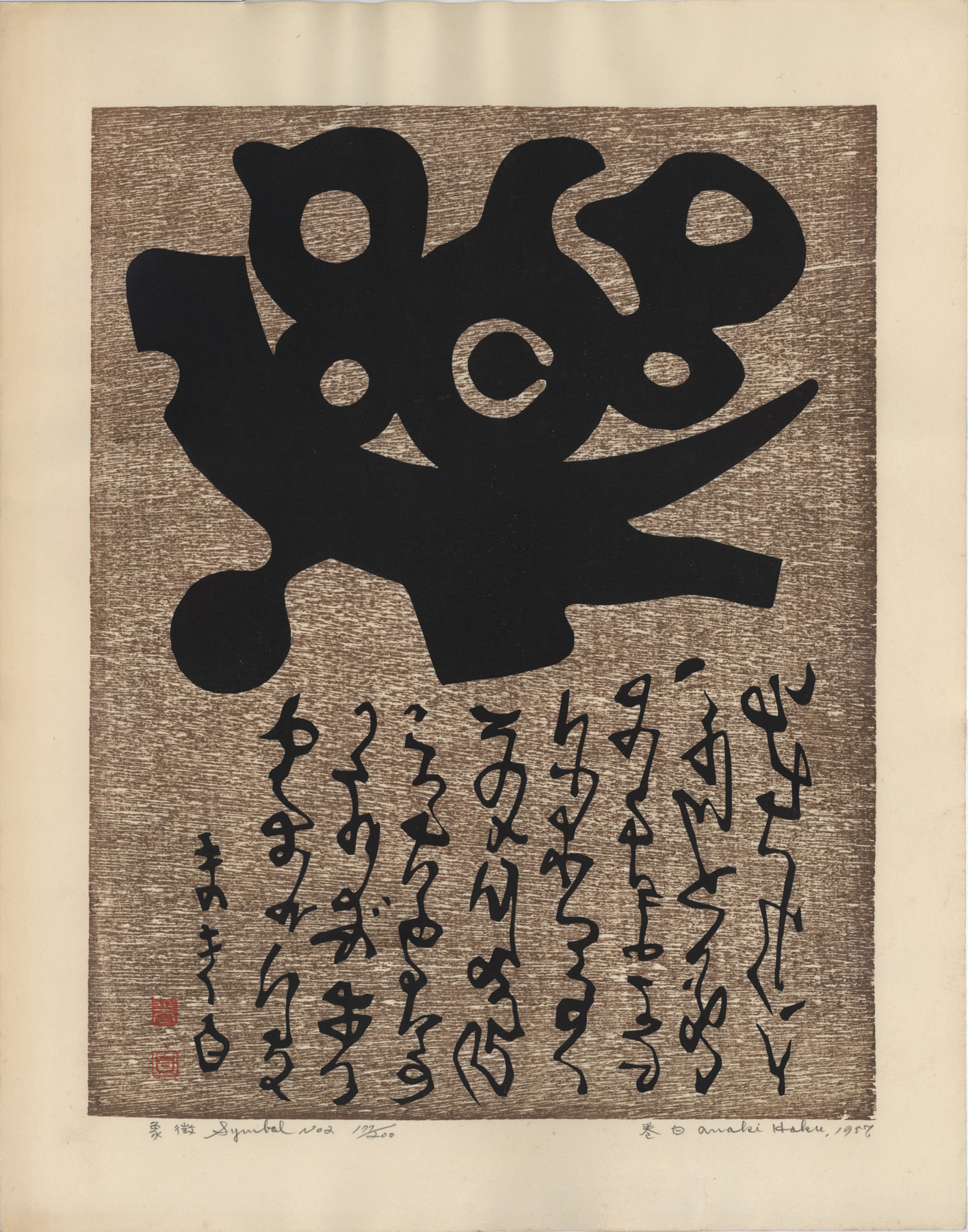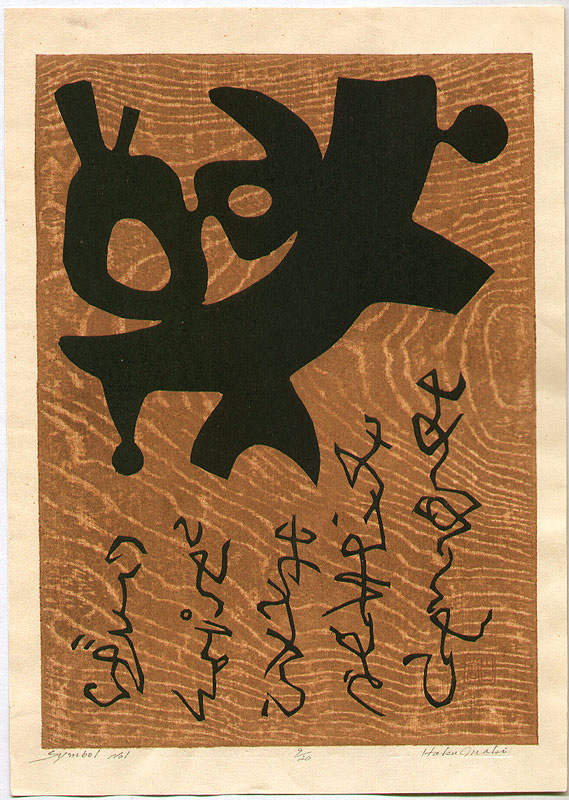About This Print
Source: Yale University Art Gallery website https://artgallery.yale.edu/collections/objects/110323
"Maki Haku is known for using the established tradition of calligraphy and abstracting kanji characters—the Chinese ideographs that are used in Japanese writing—into quirky images. At first glance, the top portion of this print seems ambiguous; some may see a twirling figure holding round bells. In fact, the figure is the character for gaku/raku (樂), meaning “music” and “enjoyment.” The etymology of gaku comes from the word for a hand instrument with bells and ornamental strings that was shaken to make music for the enjoyment of the gods. When the bells were not in use, they were hung on wooden stands (as represented by the 木 character, meaning “tree,” which appears at the bottom of the gaku/raku character)."
Two Other "Symbol" Prints
Print Details
| IHL Catalog | #2050 |
| Title or Description | Symbol No. 2 (象徴 Shōchō) |
| Artist | Maki Haku (1924-2000) |
| Signature |  |
| Seal |  |
| Publication Date | 1957 |
| Publisher | International Graphic Arts Society |
| Edition | 177/200 |
| Carver | self-carved |
| Printer | self-printed |
| Impression | excellent |
| Colors | excellent |
| Condition | excellent |
| Genre | sosaku-hanga (creative print) |
| Miscellaneous | |
| Format | |
| H x W Paper | 19 9/16 x 15 1/4 in. (49.7 x 38.7 cm) |
| H x W Image | 17 x 12 7/16 in. (43.2 x 31.6 cm) |
| Collections This Print | Museum of Modern Art, 64.1959; Philadelphia Museum of Art 1959-51-15; Yale University Art Museum 2009.215.14; Albion College 1963.070 |
| Reference Literature | The Life and Works of Haku Maki, Daniel Tretiak, Outskirt Press, Inc., 2007, p. 35. |




